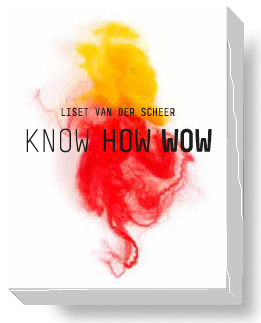



Weaving
trace
The trace pattern is a double cloth weave. The contours of the design are woven with a blue weft thread. The thread will be fastened in the pattern, and to the selvage; the other weft threads lie loose over the weave. The loose threads will then be cut or sheared.

I like the blue-white sample where the cut threads, because of the transparency of the cloth, give depth to the pattern. As a kind of shadow.

In the white sample the entire form is woven instead of just the contours of the form. In this way a subtle difference is created between a background woven with two threads and one woven with a single thread.
For weaving you need a warp and a weft. The warp is set in one or more colours.
The warp thread passes through a heddle bar, an eyelet in a shaft, and then through a reed. The shafts can move up or down leaving room for the weft thread. The shafts that move the warp threads up or down determine the definitive pattern.
In a double weave, a part of the warp threads will be used for the upper weave, the other part for the under weave. The two weaves lie on top of each other and are occasionally interconnected/interwoven.
